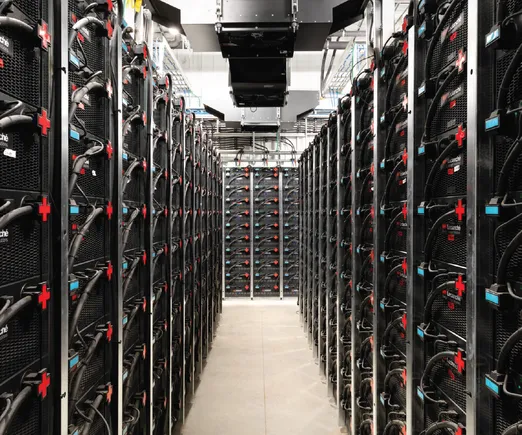As renewable energy sources expand and demand grows, battery energy storage systems (BESS) are increasingly essential for stabilizing power grids. Experts from PCL Construction provide insights on the strategic deployment of BESS.
Renewable energy generation is on the rise in North America. The Energy Information Administration (EIA) predicts renewables will produce 42 gigawatts in 2024, nearly a quarter of America’s electricity generation.
With this growth, managing the variability of renewable energy is crucial. Renewable sources often experience fluctuations in production. Walter Schachtschneider, director of engineering for PCL’s solar team, emphasizes the control BESS offers, saying, “You can’t control the sun, but you can control your batteries.”
Schachtschneider, with decades of experience, has seen significant advancements in battery technology. “I once worked with lead-acid batteries the size of mini-fridges that generated just two volts. Now, we use millions of small lithium-ion cells,” he explains, highlighting the evolution in battery chemistry and applications.
Efficient in Every Way
Modern battery energy storage systems typically involve several containers packed with lithium-ion battery cells, safety mechanisms, heating, ventilation and air conditioning, and connectivity equipment. These units integrate into larger power networks that often include renewable energy sources and commercial users.
For instance, PCL implemented over 1,500 solar modules at a major community center in Summerside, Prince Edward Island, Canada. While the solar installation saves over $100,000 annually, its 336 kilowatt-hours (kWh) capacity often exceeds the facility’s needs, leading to surplus power.
To manage this excess, a BESS with 890 kWh capacity was installed. It stores power during peak sunlight and provides backup on cloudy days or during outages, essential for Summerside’s grid, which relies heavily on diesel generators and lacks connection to major grids.
BESS complements renewable projects well, offering significant energy storage and release capabilities, beneficial for various business and utility applications. “A typical BESS can store 4,000 kWh, enough to power a shopping center for hours or manage energy during a factory power outage,” explains Schachtschneider.
Demand for electricity is expected to sharply rise, with the EIA forecasting nearly 4,125 billion kWh by 2025 in the U.S. due to population growth and a shift from fossil fuels. This increase strains the grid, evidenced by ongoing issues like California’s “duck curve” — a disparity between peak solar production and peak demand.
Schachtschneider notes, “In California, there’s potential to store energy from 10 a.m. to 2 p.m. and use it during peak times from 5 – 7 p.m.”
BESS can enhance grid reliability, help avoid infrastructure upgrades and reduce costs by managing power sales during peak demand. In certain markets, where electricity costs are based on peak demand, BESS can save significant amounts by allowing users to disconnect from the grid during peak hours.
The Tipping Point Approaches
Peak demand for BESS probably lies somewhere in the future. And it might be here sooner than you suppose. As clean energy capacity continues to climb, so will the need for BESS to manage the push and pull of power on the grid and meet economic and climate goals.
Andrew Fleetwood, chief estimator for PCL’s solar team, highlights the growth: “In 2016, my first project was 12 megawatt-hours. Now, we’re seeing demand for up to 1,200 megawatt-hours.” He notes that Ontario’s grid operator recently sought proposals for six gigawatts of storage, emphasizing the grid’s increasing dependence on such technologies.
Since starting with solar projects in 2010, Fleetwood has observed significant drops in photovoltaic panel costs and improvements in efficiency. He predicts BESS will follow a similar trajectory, enhancing in efficiency and scale, possibly with new battery technologies surpassing lithium-ion.
Fleetwood’s colleague, Andi Kasapi, sees parallels in the evolution of solar energy, where advancements and increased supplier competition have driven costs down and expanded feasibility. “The market will get more efficient as it develops,” Kasapi predicts.
Recognizing the crucial junctures in energy storage development, Kasapi and Fleetwood stress the importance of expert guidance in navigating these investments. “With our deep experience and industry connections, we help clients manage costs and risks effectively,” says Fleetwood.
About 80% of BESS project costs are attributed to the batteries, according to Fleetwood, underscoring the importance of strategic partnerships with technology providers to lower costs. He also highlights the systems’ rapid response capabilities, which, while advantageous, require robust risk management strategies due to their potential for industry interruptions.
PCL’s vast experience with critical infrastructure positions it uniquely to support organizations in maximizing their BESS investments and managing associated risks, establishing it as a dependable player in the expanding field of renewable energy storage.

